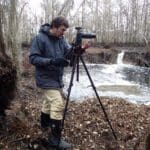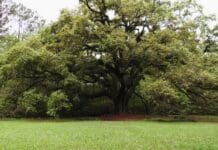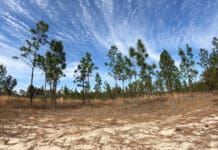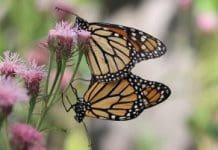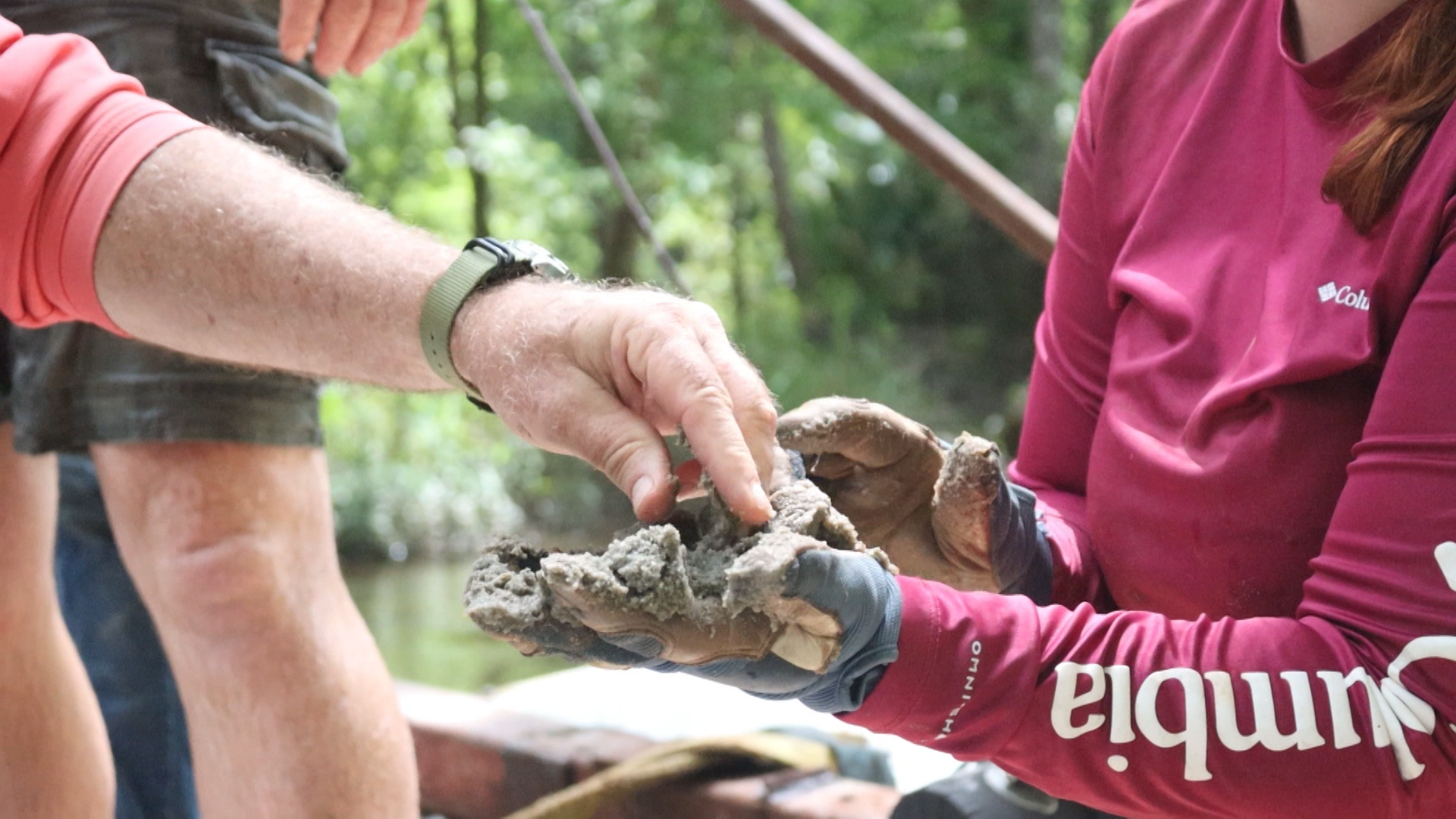

A look at how Apalachicola Riverkeeper is restoring sloughs- connections between the Apalachicola river and the swamps of its floodplain. These connections were partially cut off by dredging projects decades ago. See more at https://blog.wfsu.org/blog-coastal-health/2021/05/apalachicola-slough-restoration-getting-more-water-to-swamps-bay/
“The head of the East River right ahead of us,” Says Dan Tonsmeire. We’re creeping towards the mouth of the slough, which is mostly hidden behind a fallen willow tree. Dan, the retired Apalachicola Riverkeeper, is shuttling folks to a work site here for a Riverkeeper project.
“The willows and the grass here have built up on this kind of berm,” says Ken Jones, “that has migrated off the side and is starting to close- watch your head.” I duck under a willow branch as we enter the slough. Ken continues- “that’s closing this [slough] off. You can see all the sediment on this sort of plateau.”
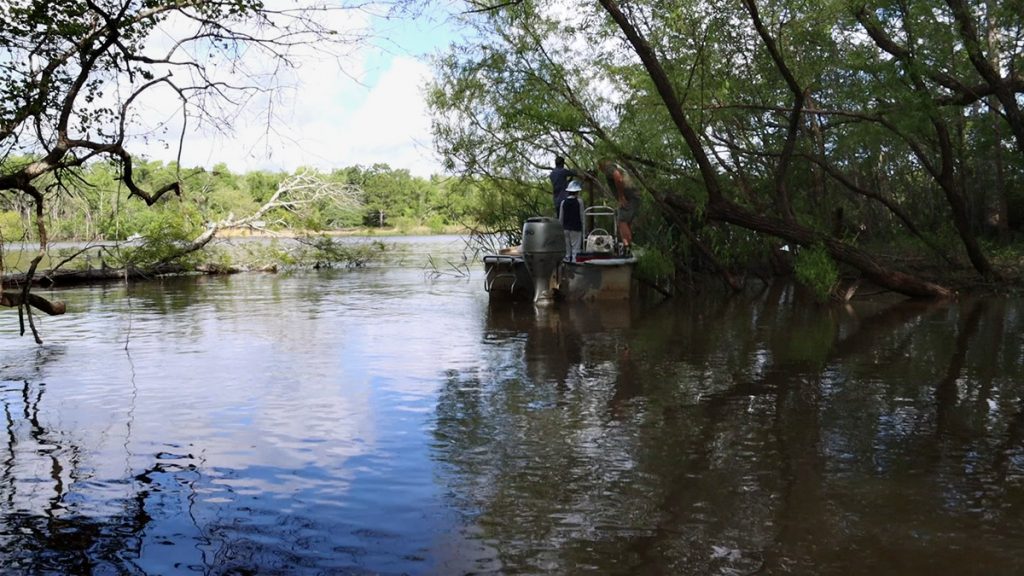

Ken’s an engineer managing a slough restoration project with the Riverkeeper. He’s here today to look at the sediment at the mouth of the East River, and for a couple of miles upstream. Other engineers, decades ago, sent river sand onto the muck typically found in places like this. Those Army Corps of Engineers dredging projects have somewhat clogged the mouths of sloughs all along the river, cutting off connections to wetlands. Or, in this case, a major connection between the river and Apalachicola Bay.
Ken is pointing out that here, willows and reeds have taken root in the sediments clogging the opening. Their roots, in turn, gather more sediment around them. Plant roots have always played an important role in building and maintaining land; here, they’re likely extending a manmade mass.
Apalachicola Riverkeeper obtained enough funding to open up three such blockages along the river. They’re not going to come in and start digging right away; first, they need to figure out one thing- what should be the shape of this slough?
Rob Diaz de Villegas is a senior producer for television at WFSU Public Media, covering outdoors and ecology. After years of producing the music program OutLoud, Rob found himself in a salt marsh with a camera, and found a new professional calling as well. That project, the National Science Foundation funded "In the Grass, On the Reef," spawned the award-winning WFSU Ecology Blog. Now in its tenth year, the Ecology Blog recently wrapped its most ambitious endeavor, the EcoCitizen Project.
Rob is married with two young sons, who make a pretty fantastic adventure squad.

